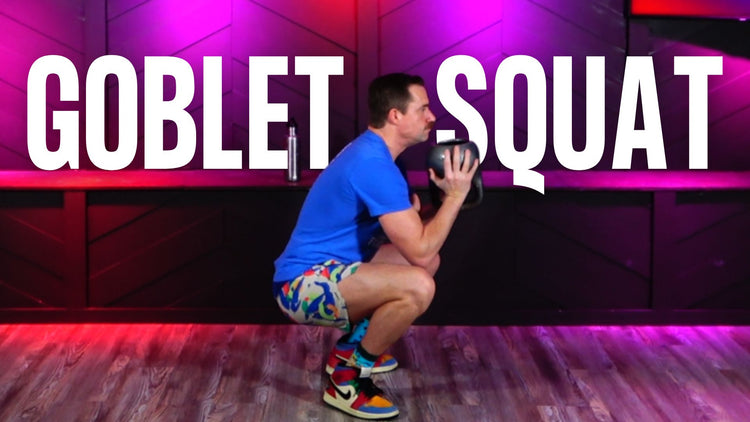Benefits of the Kettlebell Goblet Squat and How to Perform Them
There's a reason goblet squats are the first exercise in our "Kettlebell 365" exercise library - a progressive series of daily kettlebell exercises for a whole year.
So, how do you perform them correctly, who are they for, and why are they so great?
Watch the video and keep reading.
Four Benefits of Goblet Squats
Many people see a goblet squat and think boring "leg exercise" but that's where they'd be wrong. Here are five different benefits of a kettlebell goblet squat in addition to building the ever-so desirable kettle booty.
- Improved Mobility: Goblet squats involve deep knee bends, which can enhance flexibility and mobility in the hips, knees, and ankles.
- Functional Movement: Goblet squats mimic natural movements like bending down and lifting, making them practical for daily activities and sports.
- Core Strengthening: Holding the weight close to your chest engages the core muscles, contributing to overall strength and stability.
- Accessibility: Goblet squats are relatively easy to learn and can be adjusted for various fitness levels by using different weights.
How to Perform a Kettlebell Goblet Squat
Incorporating goblet squats into your routine helps you move better in daily activities. Think about how often you need to squat down to pick something up or sit and stand throughout the day.
With enhanced mobility from goblet squats, these actions become smoother and safer, reducing the risk of injury.
- Grip the Kettlebell: Notice how the silhouette of the kettlebell looks like a goblet when you hold it upside down? A ha! The Goblet Squat! Hold the kettlebell upside down by pressing your palms into the sides. Keep your forearms parallel to each other. You may also experiment with holding the kettlebell by the horns for a more comfortable grip if necessary.
- Assume the Stance: Find an athletic stance with your feet slightly wider than shoulder-width apart, soft knees. You should feel light on your feet but ready to spring into action! Engage your core by squeezing your abs, imagining you're tightening your muscles around your torso like cinching a belt.
- Lower into the Squat: Begin the goblet squat by sitting your hips back as if you're going to perch on a stool. Keeping your heels down and ensuring your knees track in the same direction as your toes, lower yourself as deep as you can while remaining pain-free and keeping your chest up and the kettlebell in front of you. (If the kettlebell is in line between your head and the floor, you're bending over too much, which moves the load into your back rather than your lower body.)
- Reach Your Depth: Aim to achieve a 90-degree bend in your legs. If you can go deeper, that's great, but don't lose the tension and rest in the bottom. You CAN press your elbows inside your knees to stretch your groin and work your legs, hips and core in the bottom of the goblet squat. Stay activated.
- Return to the Starting Position: Resist the temptation to rise too quickly. Squeeze your glutes and actively press your feet into the floor as you return to standing - again keeping your torso as upright as possible. You want to feel this work in your legs, not your back.
PRO TIP: Many people experience tightness in their knees when lowering into the goblet squat. You can negate this by engaging your hamstrings and using them to pull yourself into the squat.
Meet the perfect kettlebell for goblet squats!
Goblet Squat Form Considerations
- Knee Alignment: Ensure your knees move in the same direction as your toes. Adjust your stance as needed to avoid rolling out on your feet or having your knees cave inward. This will vary depending on your anatomy and mobility.
- Spinal Alignment: Keep your lumbar spine flat. Avoid rounding your lower back.
- Core Engagement: The goblet squat is effective for engaging your core, especially the erectors, as the front-loaded weight forces you to keep your chest up. This exercise not only benefits your legs but also strengthens your core.
- Foot Position: Depending on your anatomy, you may need to adjust your foot position to create a more narrow or wider stance to accommodate comfort, alignment and depth of your squat.
Conclusion
The goblet squat is not just for building strength.
It is a powerful tool to increase flexibility in your hips, ankles, and thoracic spine. As you descend into the squat, your body learns to move more freely and efficiently, breaking through the tightness that often comes from our modern sedentary lifestyles.
If you have any questions or need guidance on incorporating goblet squats into your workouts, I'd love to coach you. You can book an introductory online coaching call with me here.
Stay strong and keep training!



